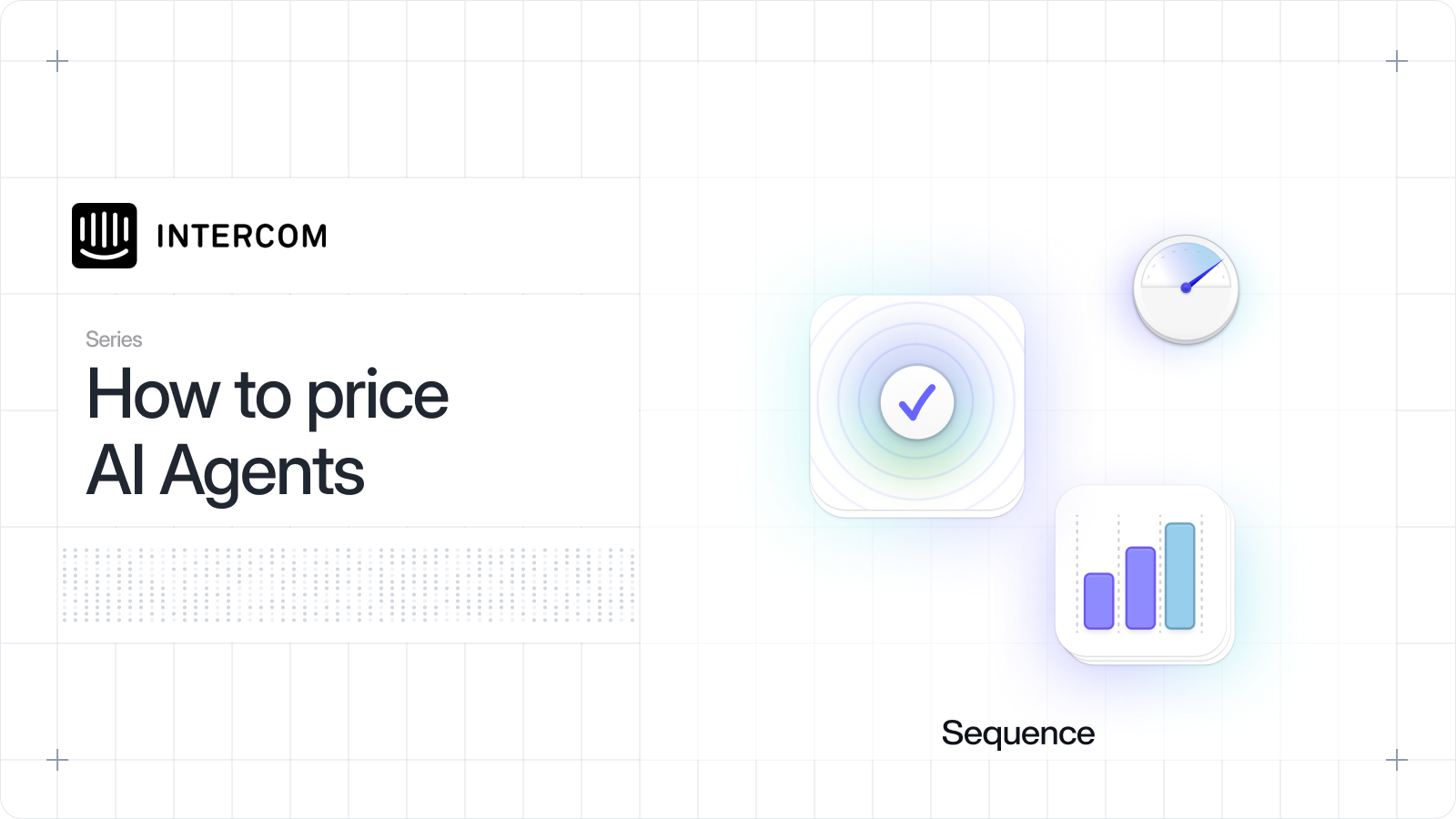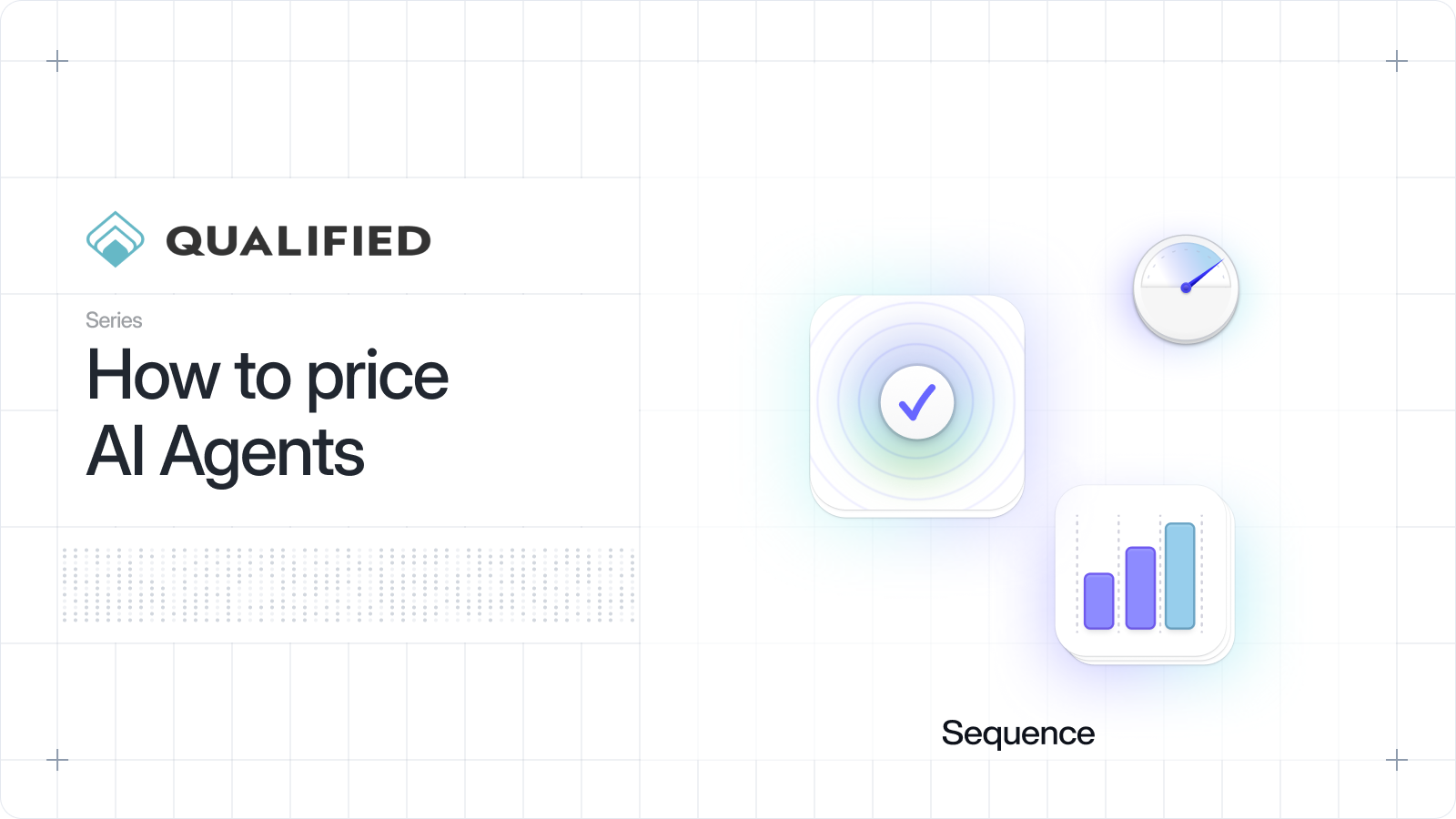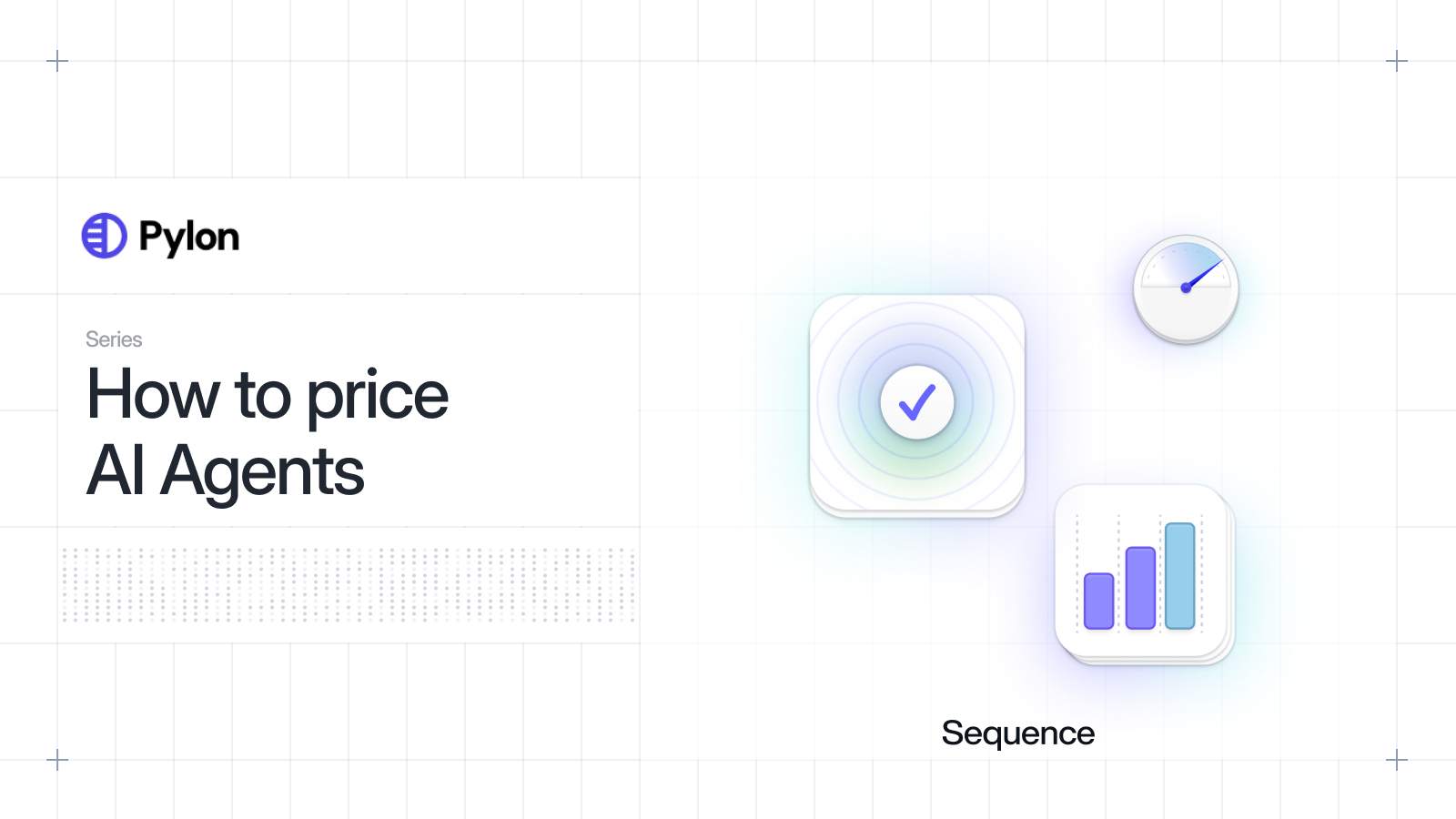Enda Cahill
How Intercom cracked outcome-based pricing with Fin.ai
How do you charge for something customers don't fully trust yet? Intercom's Fin.ai has become an established frontrunner in the AI support domain, but Aisling O'Reilly and the Intercom team considered multiple different models before landing on outcome-based pricing, which optimised customer adoption while reinforcing full alignment across product and GTM teams.

When Intercom launched Fin, their AI agent, in early 2023, they faced a problem: how do you price something that nobody fully trusts yet?
The AI hype was everywhere, but so was the skepticism. Customers had been burned by chatbots that couldn't answer basic questions. They'd seen "AI-powered" tools that somehow created more work than they solved. And here was Intercom, asking customers to trust their AI agent with their customer relationships.
Aisling O'Reilly, who runs pricing at Intercom, recently shared the inside story of how they figured it out.
Why traditional SaaS pricing breaks with AI
Before Fin, Intercom's pricing was straightforward with seat-based pricing for each user.
Fin was different. As Aisling puts it: "With Fin, it's actually delivering outcomes and doing the work, it's handling all of the conversation from start to finish."
An AI agent that works 24/7 and handles unlimited conversations doesn't fit into a per-seat model. Charging "per seat" only makes sense when humans are using software. But Fin operates independently - it's not a tool your team uses, it IS the team member doing the work.
Pre-launch experimentation
Intercom considered a bunch of approaches with customers in research before launching. Each one came with it’s own set of draw backs:
Per conversation pricing seemed logical. Simple usage-based model. But then they realized customers would pay even when Fin couldn't resolve the issue. They'd essentially pay twice: once for Fin's attempt, once for the human cleanup. Customers understandably pushed back against this.
Per seat pricing was familiar but nonsensical. How many "seats" does an AI agent need?
The best failed idea was AI-confirmed resolutions, where an AI would judge whether their AI successfully resolved issues. In today’s world where agentic workflows are being built on the basis of AI models working together, Intercom were ahead of their time with this, but customers were initially not a fan of the potentially ‘biased’ observer determining their monthly invoice.
The outcome-based breakthrough
Most companies stall on the outcome-based question due to the inability to define what ‘success’ looks like in the product, followed by the inability to track this success accurately. Intercom was well positioned on both fronts as Aisling highlights that “all of the success data was being tracked already, so it was easy to leverage that into our pricing strategy”. As a customer service platform, responses also have a clear success status; has the query been resolved?
The specific pricing solution came from asking customers a simple question: what would make you comfortable trying this? The answer was unsurprising: "we'll pay when it works."
So Intercom became the first in their industry to introduce pure outcome-based pricing. You only pay when Fin successfully resolves a conversation without human intervention.
They define success in two ways:
- Confirmed resolution: The customer explicitly confirms the answer was satisfactory by entering an affirmative response such as "Ok thanks" or "That helped."
- Assumed resolution: The customer exits the conversation without requesting further assistance or follow-up.
Executing outcome-based pricing effectively
Of course, outcome-based pricing introduced new challenges; predictability proved to be the most important initial hurdle.
CFOs don’t like unknown costs creeping up across their software stack. "How much will this cost next quarter?" is a reasonable question that's hard to answer when pricing depends on performance.
Intercom solved this with two introductions:
Pre-committed resolution buckets: Buy 10,000 resolutions in advance and use them throughout the year. This removed the "use it or lose it" monthly commitments, and ensured teams would have the ability to manage seasonality in their business, while ensuring they’re still only paying for successful usage.
Discounted overages: Most SaaS companies punish you for undercommitting, by charging a premium if you go above contracted volumes. Intercom flipped that on its head and ensured that discounts are extended to overages. This provided a nice alignment with customers who saw their Fin adoption being rewarded by a cheaper unit rate.
As Aisling summarized, "We've very deliberately made it easy to try and buy, to start small and then grow into the spend that's needed”.
Pragmatic pricing adjustments for each customer segments
Not every customer is the same.
Startups are cost-conscious but ambitious, and often become the midmarket and enterprise customers of the future. To capitalize on this, Intercom gives them 90% off their contract plus 300 free resolutions monthly for a year.
Regional differences matter too. A support agent in San Francisco costs way more than one in Manila. Their pricing needs to make sense against local labor costs, or the ROI doesn't work.
The $1m Guarantee
As many of you will have read, Intercom recently shared that they offer a $1 million guarantee if Fin doesn't hit agreed performance targets.
While this grabbed headlines, the business case is actually quite sound in practice. As Aisling notes, "we've the best performing customer service agent on the market and we're winning in 100% of bake-offs against our key competitors."
It's not just marketing. They offer two guarantees:
- 90-day money back for any customer that’s not happy with Fin’s performance
- The $1 million-dollar payout for customers in their performance program
The guarantee isn't just about confidence. It's about changing the conversation from "What if it doesn't work?" to "What happens when it does?"
What's Next for AI Pricing
Aisling sees the whole industry shifting toward outcomes. Makes sense. As she puts it: "Customers just aren't going to accept paying for software or agents that aren't providing results."
Intercom might eventually charge different prices for different types of resolutions. Answering "What's your refund policy?" over live chat provides very different value to an AI agent actually processing the refund over the phone Today, they keep it simple: one price for all resolutions. But that might change.
The really interesting future? AI agents validating their own work. As trust in AI grows, we might see AI determining whether AI succeeded. Intercom explored it too early, but the idea isn't dead.
The unexpected alignment benefit
Here's something Intercom didn't anticipate: outcome-based pricing aligned their entire company.
"Now the whole company are invested in making customers successful with Fin," Aisling observes. "Everyone from our Sales team, to our R&D team, it's all about getting Fin involved in more conversations and about increasing Fin's effectiveness."
When your revenue literally depends on your product working, everyone becomes obsessed with making it work better. No more shelfware. No more "good enough." Just results.
Key takeaways:
Looking back, a few things stand out:
Trust beats complexity: Intercom could have built elaborate pricing tiers, but simple outcome-based pricing built trust faster.
Align incentives early with (measurable) outcomes: when vendors and customers want the same thing, the sales process and customer satisfaction ratings thank you.
Different customers need different pricing paths: startups, enterprises, and regional markets all need their own approach.
Bold moves matter: the $1 million-dollar guarantee got attention, but more importantly, it showed they believed in their own product.
The AI pricing playbook is still being written, but the days of paying for AI that doesn't deliver are numbered, and that's good news for everyone.
If you want guidance on how to set up your outcome-based model, contact the team at Sequence to see the best in class billing and quote to cash experience for modern B2B teams.
Based on insights from Aisling O'Reilly, who leads pricing strategy at Intercom, on how they pioneered outcome-based pricing for Fin.ai.
Enda Cahill
Related articles

How Qualified priced their AI SDR agent: from add-on to all-in strategy
Most SaaS companies price AI features as add-ons, but Qualified learned this approach can be short-sighted. Their journey with Piper, an AI SDR agent, shows why bundling AI into core plans often works better than charging separately for it.
Riya Grover

How Pylon prices different AI products: Agents vs Assistants
Pylon changed their pricing model six times. As an AI-native platform helping B2B companies run post-sales support and customer success, they learned that different types of AI products need different pricing approaches.
Riya Grover

How Duffel bills 150+ customers in 20 currencies with 1 Finance operator
We're excited to announce our partnership with Duffel, a London-based technology company offering an API for businesses to sell travel-related services.
Riya Grover